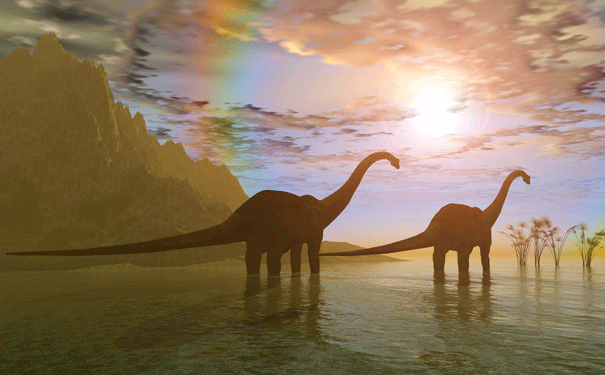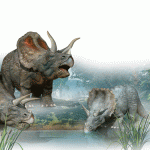
An artist's rendition of two Diplodocus, one of the species that appeared to have a stable population. Image: Shutterstock
New research suggests that some dinosaurs may have been slowly declining before they finally disappeared.
One of the most hotly contested issues in palaeontology is what killed the dinosaurs. Some of the candidates include asteroid impacts and volcanic eruptions, but a new study has suggested that it was probably more complex than a sudden catastrophe.
A research team from the American Museum of Natural History has examined the extinction based on the variable body structures among 150 species of dinosaur. The findings suggest that the large-bodied bulk-feeding herbivores were declining during the last 12 million years of the Cretaceous, but the carnivores and the smaller plant-eaters were not.
“By looking just at trends in taxonomic diversity, you get conflicting answers about the state of dinosaurs prior to extinction,” said Columbia University graduate student Steve Brusatte, lead author of the study published in Nature Communications. “This is because the results can be biased by uneven sampling of the fossil record.
“In places where more rock and fossils were formed, like in America’s Great Plains, you’ll find more species. We wanted to go beyond a simple species count for this study.”
According to author Richard Butler of Ludwig Maximilian University of Munich, there were hundreds of species living in the Late Cretaceous, all differing in diet, shape, and size. “Different groups were probably evolving in different ways and the results of our study show that very clearly.”
The scientists examined the biodiversity of each species, which gives an overview of their health. Species that are experiencing an increase in biodiversity may have an evolutionary edge, while species that are decreasing could be on the long path to extinction.
They found that hadrosaurs and ceratopsids, the bulk-feeding herbivores that did not feed selectively, were already declining. However, sauropods, smaller herbivores and carnivores either remained stable or experienced a slight increase in biodiversity.
These disparities give a more nuanced picture of the final 12 million years of dinosaur history, according to Brusatte. “Contrary to how things are often perceived, the Late Cretaceous wasn’t a static lost world that was violently interrupted by an asteroid impact.”
There were also variations according to geography — the hadrosaurs were declining in North America, but were increasing in biodiversity in Asia. This may have been due to extreme fluctuations in North America, making it difficult to determine whether the declining groups would have survived if the asteroid hadn’t struck.
Source: The American Museum of Natural History






